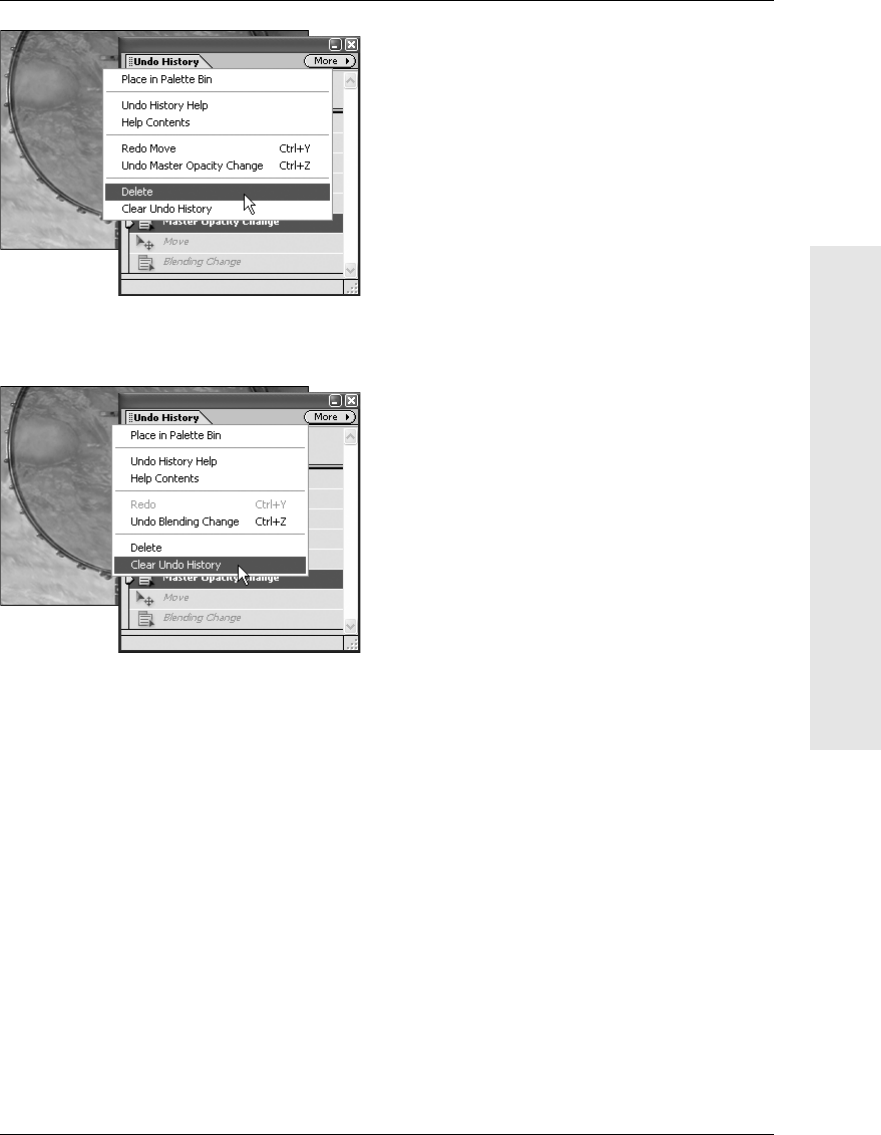
Using the Undo History
Palette
The Undo History palette lets you move
backward and forward through a work ses-
sion, allowing you to make multiple undos
to any editing changes you’ve made to your
image. Photoshop Elements records every
change and then lists it as a separate entry,
or state, on the palette. With one click, you
can navigate to any state and then choose to
work forward from there, return again to the
previous state, or select a different state from
which to work forward.
To navigate through the
Undo History palette:
1.
To open the Undo History palette, do one
of the following:
▲
From the Window menu, choose
Undo History.
▲
From the palette well, click the arrow
on the Undo History palette tab.
2.
To move to a different state in the Undo
History palette, do one of the following:
▲
Click the name of any state.
▲
Drag the palette slider up or down to a
different state (Figure 5.66).
✔ Tips
■
The default number of states that the
Undo History palette saves is 20. After 20,
the first state is cleared from the list,
and the palette continues to list just the
20 most recent states. The good news is
that, at any time, you can bump the num-
ber of saved states up to 100, provided
that your computer has enough memory.
From the Edit menu, choose Preferences >
General, then in the Preferences dialog
box enter a larger number in the Undo
History States field.
Figure 5.66 Use the palette slider to move to virtually
any point in time in the creation of your project.
156
Chapter 5
Using the Undo History Palette
■
If, on the other hand, memory is at a
premium (and you’d rather Photoshop
Elements wasn’t clogging up your pre-
cious RAM by remembering your last
20 selections and brush strokes and filter
effects), set the number in the Undo
History States field to 1. You can still
undo and redo your last action as you
work along, but for all practical purposes,
the Undo History palette is turned off.





